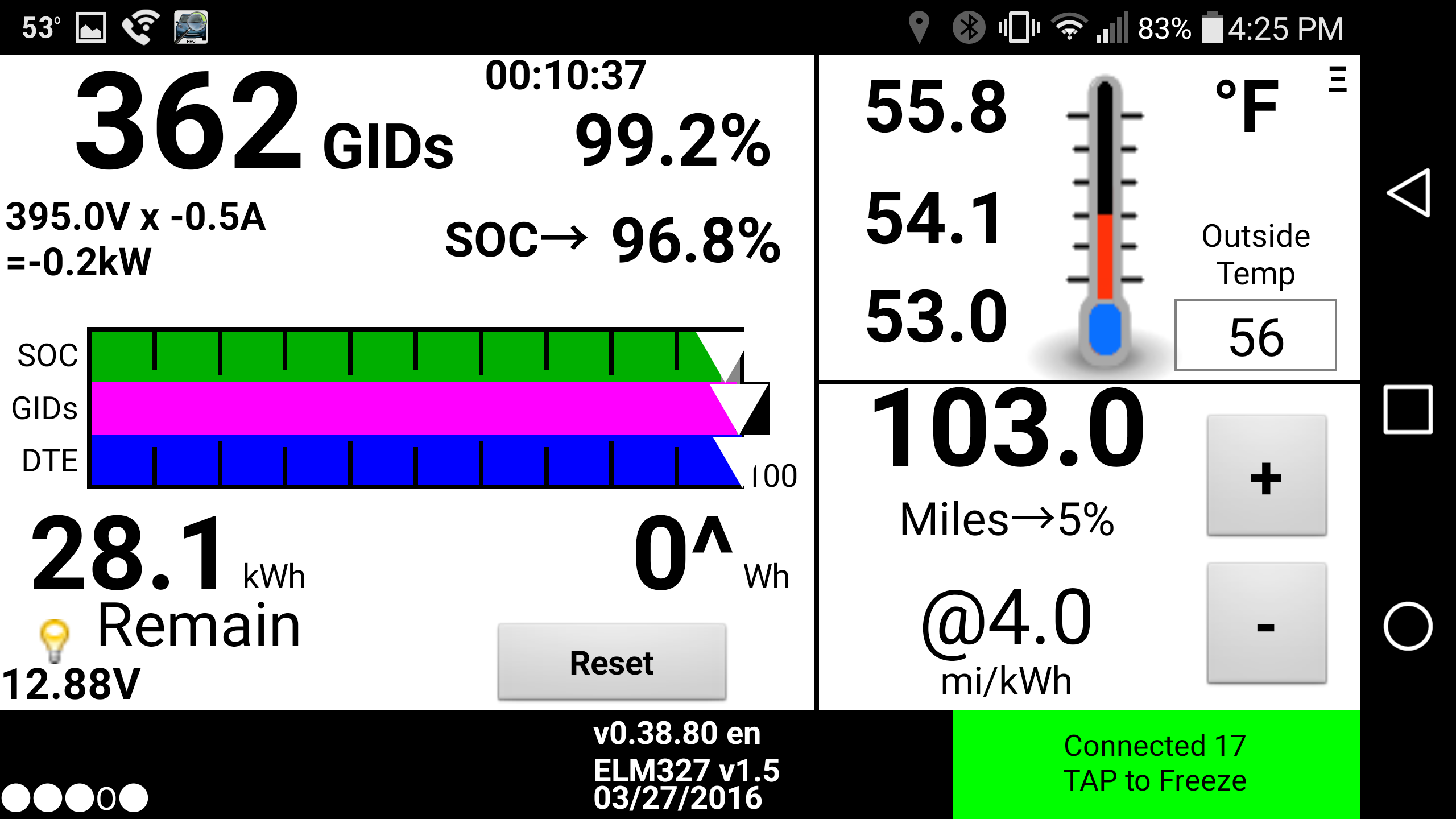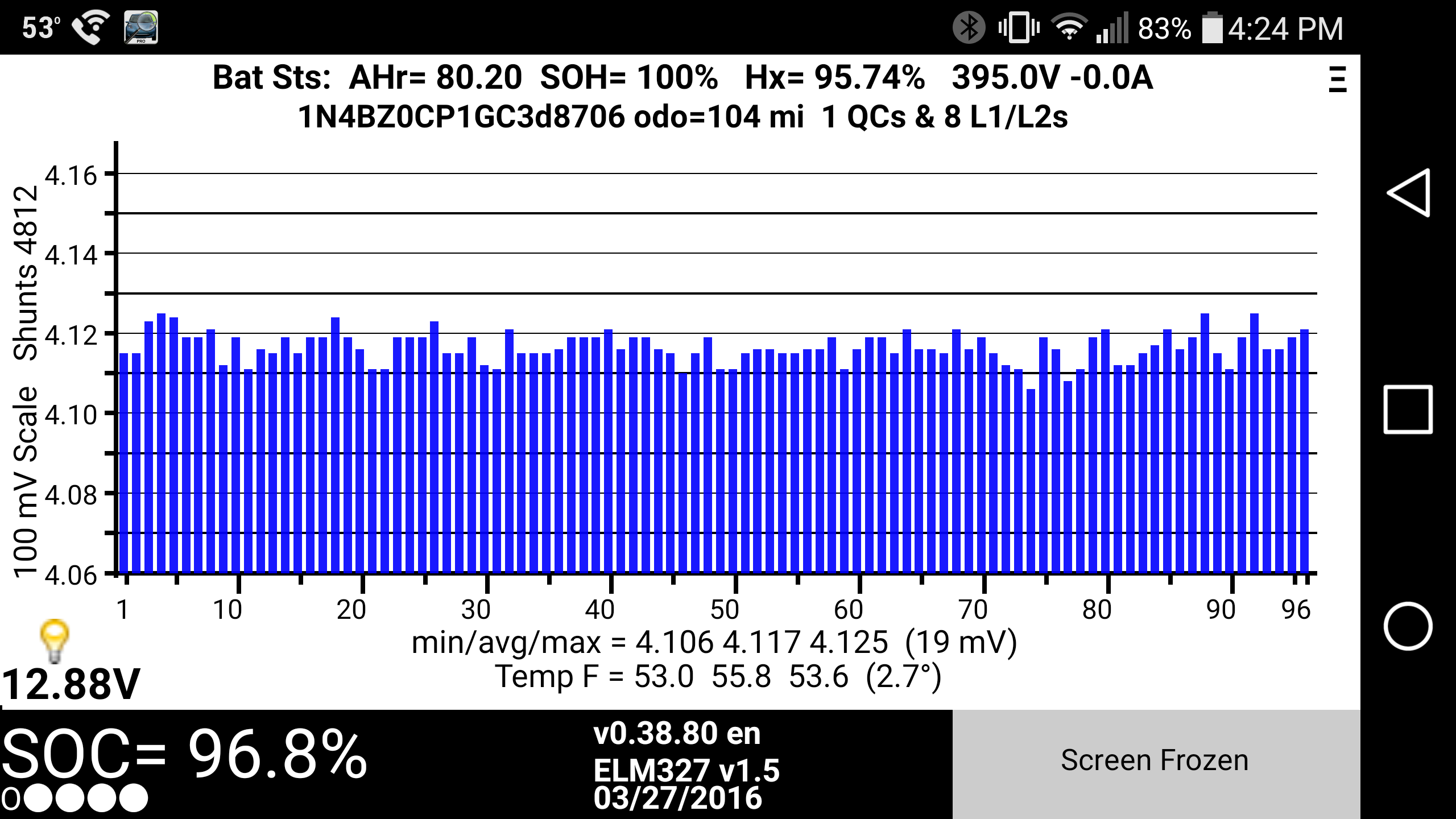I made an extra effort today to run the battery down. Ended up at 10% charge (39 GIDs) and 94 miles. Low battery warning was at 12% (46 GIDs). I also noted that the cell voltage was 3.52V at 10%. When I had the battery down to 3% the other day the cell voltage was 3.30V. It looks like 10% charge is right at the knee of the discharge curve. That may be why Nissan expects the battery to last longer. Anybody know what the cell voltages are on the old batteries at the same discharge levels? I've plotted the discharge curve and it looks fairly linear between 100% and 10% with a distinct falloff below 10%
I wonder if I didn't read my notes wrong the other day when I stated that low battery warning was at 17% It might have been at two bars remaining rather low battery warning although I thought that low battery warning was supposed to be at 2 bars left. In any case today I didn't get a low battery warning until I was below 13% and I was watching for it from the time I hit 20% on.
Can anyone else confirm this?
I wonder if I didn't read my notes wrong the other day when I stated that low battery warning was at 17% It might have been at two bars remaining rather low battery warning although I thought that low battery warning was supposed to be at 2 bars left. In any case today I didn't get a low battery warning until I was below 13% and I was watching for it from the time I hit 20% on.
Can anyone else confirm this?


